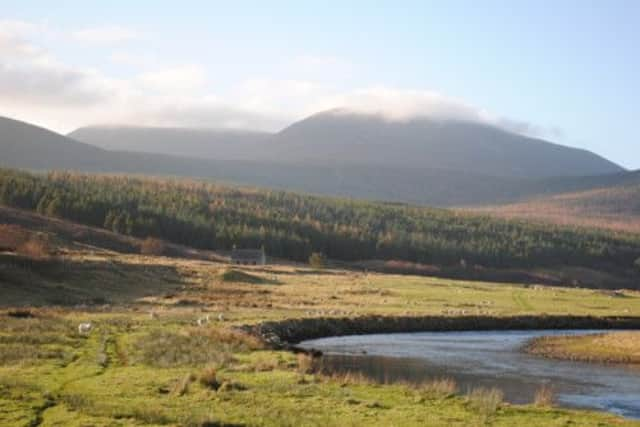Highland Clearances excavation plan for Kildonan


The Caen Excavation Project at Kildonan, in East Sutherland, will investigate one of the many hundreds of longhouses abandoned at the time when the landowners evicted their tenants to use the land for more profitable sheep farming.
It is part of the Timespan Museum’s Translocation project launched in January and which is following the historical calendar of events beginning with the Kildonan Riots in January 1813.
Advertisement
Hide AdThis comprised of an uprising by the farming tenant’s showed the landowners that the majority of the population of the Strath of Kildonan were not willing participants in the agricultural changes that were forced upon them at the time of the Highland Clearances.
The policy of the Sutherland Estate at the time had been to set fire to the longhouse roofs to prevent tenants from returning to their homes.
This was a time of physical and cultural translocation that had a life-changing impact on the lives of these Highlanders.
Around 100 displaced residents left the Strath of Kildonan in June 1813, including a boatload of people who sailed to Hudson Bay, in north eastern Canada, where they were forced to build their own shelters as the savage Canadian winter closed in.
The following spring, they began an epic 1000 mile journey, many walking in handmade snowshoes, before reaching the Red River Settlement around Lake Winnipeg in Canada where Scottish aristocrat, the Earl of Selkirk, had promised them land.
One of the many invaluable strands of the excavation is that it will help to establish the sequence of events that led to the removal of the township inhabitants by the estate, as well as providing a further understanding of settlement pattern in the local area through the Medieval period.
Advertisement
Hide AdOrganisers say the 19th century longhouse excavation presents the local community with the opportunity to embrace the area’s history.
From May until July 2013, events at Timespan Museum and Arts Centre include a virtual reconstruction of the township, and an exhibition by photographer Carolyn Lefley which opens at on Saturday.
Advertisement
Hide AdAs Artist in Residence at Timespan, Carolyn will make new work in response to the excavation and will explore notions of home.
She said: “I’m looking forward to returning to Helmsdale and Timespan after visiting last summer to photograph abandoned croft houses in the area.
“Now I’m returning to exhibit the fruits of last summer’s project and to make new work in response to the excavation of the long house.
“As an artist who uses photography in my practice I’m also interested in the parallels of the process of excavation, of peeling back the layers of earth to reveal evidence of the past and the indexical quality of a photograph to record reality.
“What is interesting about most excavations, including this one, is that the site being revealed pre-dates the invention of photography.
“In 1813, when this longhouse was hastily abandoned, there were no cameras, but this excavation is going to provide wonderful ‘images’ of the way Kildonan’s people lived.”
Advertisement
Hide AdAnna Vermehren, Director of Timespan, added: “The community is looking forward to the opportunity to observe and participate in our Translocation Longhouse Excavation.
“This project has attracted much attention from different universities and disciplines.”
Advertisement
Hide AdThe excavation team include experts from universities in Edinburgh, Durham, Aberdeen, St Andrews and the University of the Highlands and Islands.
She said: “Part of our Excavation Project is a Virtual World application that is accessible in our storytelling room.
“You can visit the township of Caen via avatar as we imagine it 200 years ago. The virtual world has been created by St Andrews University, School of Computing.
“It offers a unique opportunity to our visitors where gaming technology is married with historical information. While we’re digging at Caen, we will be updating the virtual world with the data from the finds to make the model more accurate to what the Township had looked like before it was vacated in 1815.”